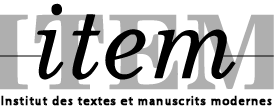28/09/2023 - 29/09/2023, Taipei
 When Emily Dickinson happens to draft on the flap of an envelope or when Nabokov decides on the index card as his preferred tool, are the materials, the concrete vehicles of creativity merely accidental or are they substantive? Would Dickinson on any other paper be just as poetic? Or alternatively, a full stop will come to punctuate the endless reshuffling of the cards in Nabokov’s The Original of Laura only when we are able to name the game. If the environs do play a part in the creative event, what are the lines of demarcation between the event and its surrounding which will help confine our examination and its later or lateral representations, print or otherwise? On what basis can we say that the drafting is thrown into and liberated from the controlled chaos that is a writer’s desk, that the creative event is distributed across the entire workflow, or, in the end, the event can only be fully understood by resorting to a higher system?
When Emily Dickinson happens to draft on the flap of an envelope or when Nabokov decides on the index card as his preferred tool, are the materials, the concrete vehicles of creativity merely accidental or are they substantive? Would Dickinson on any other paper be just as poetic? Or alternatively, a full stop will come to punctuate the endless reshuffling of the cards in Nabokov’s The Original of Laura only when we are able to name the game. If the environs do play a part in the creative event, what are the lines of demarcation between the event and its surrounding which will help confine our examination and its later or lateral representations, print or otherwise? On what basis can we say that the drafting is thrown into and liberated from the controlled chaos that is a writer’s desk, that the creative event is distributed across the entire workflow, or, in the end, the event can only be fully understood by resorting to a higher system?
We can think of the creative space on the model of the semiosphere as envisioned by Juri Lotman. Namely, without attending to and attempting to reconstruct the environ, i.e., the envelope instead of its flap, in which the individualized creative event finds itself, the latter cannot be fully understood: “all semiotic space may be regarded as a unified mechanism . . . In this case, primacy does not lie in one or another sign, but in the ‘greater system,’ namely the semiosphere. The semiosphere is that same semiotic space, outside of which semiosis itself cannot exist.”
In contrast, if we can look for inspiration in psychology, creativity resides neither in the inner psychic reality nor in the external reality. According to Winnicott, “play is in fact neither a matter of inner psychic reality nor a matter of external reality.” The place of creativity is “neither inside nor outside.” This space of potentiality, as he calls it, is where culture and creativity should be more suitably located: “The place where cultural experience is located is in the potential space between the individual and the environment.” Is it possible to look at the workspace, the artist’s studio, the performative and cinematic group setting as that flexible and interstitial space that Winnicott has set out for us?
PROGRAMME de la conférence Genesis Taipei 2023












